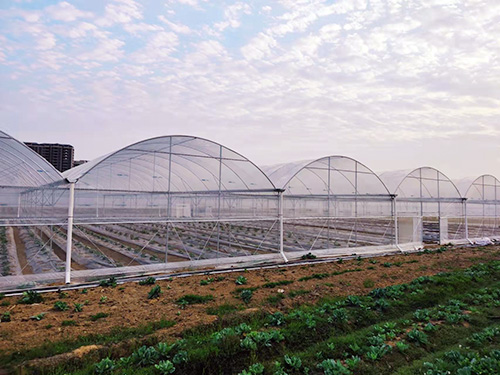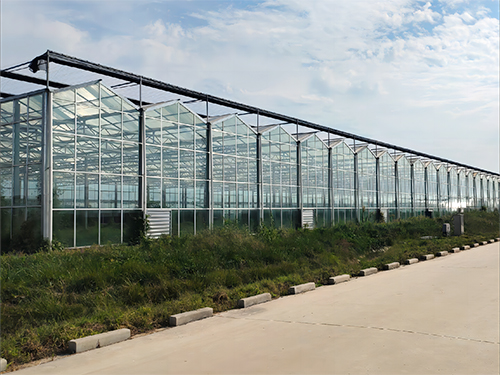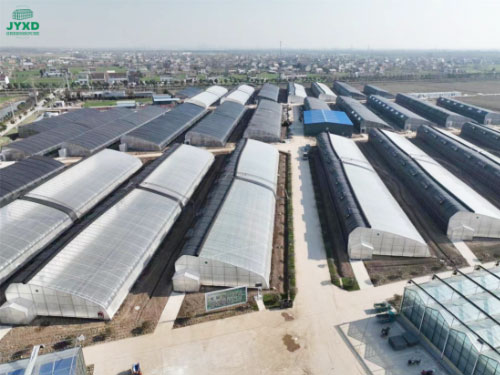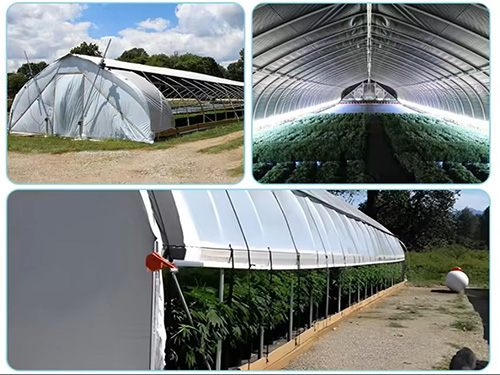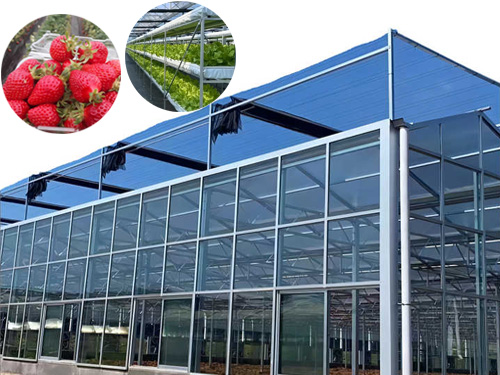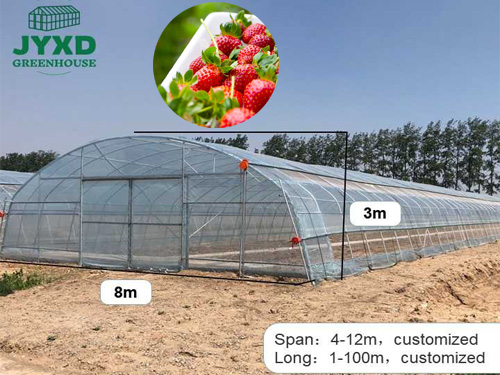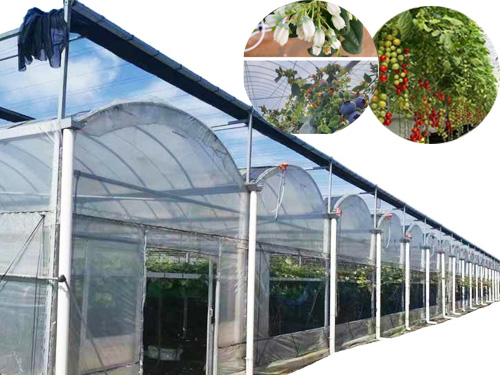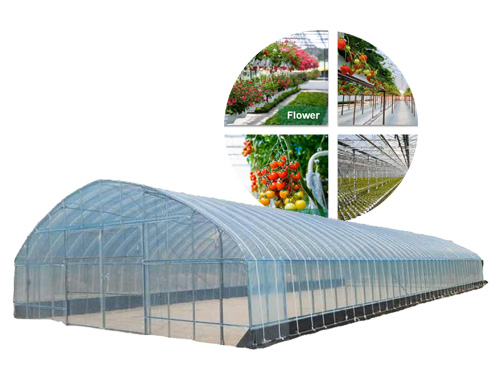NEWS DETAILS
NEWS INFORMATION
Gas Exchange in Greenhouses: Balancing Oxygen and Carbon Dioxide
AUTHOR:jyxd-greenhouse DATE:2024-12-27 00:55:30 HITS:53
In greenhouse farming, managing gas exchange is one of the key factors determining crop growth and yield. Oxygen and carbon dioxide play crucial roles in photosynthesis and respiration. Maintaining a balance of oxygen and carbon dioxide in the greenhouse is a core challenge in optimizing crop growth. This article will introduce you to the principles of gas exchange in greenhouses, management methods, and efficient solutions.
Importance of Gas Exchange for Plant Growth
1. Photosynthesis
Plants absorb carbon dioxide through photosynthesis and, with the assistance of sunlight and water, produce oxygen and organic matter. This process directly affects plant growth speed and yield.
2. Respiration
Plants consume oxygen through respiration, breaking down stored organic matter to provide energy for growth, reproduction, and self-repair.
3. Impact of Gas Imbalance
· Carbon Dioxide Deficiency: Weakens photosynthesis, slows growth, and reduces yield.
· Oxygen Deficiency: Hinders plant respiration, damages root health, and suppresses overall growth.
Main Challenges of Gas Exchange in Greenhouses
1. Closed Environment Limitations
Greenhouses are usually fully or semi-closed structures, resulting in limited gas circulation, which can easily cause imbalances in oxygen or carbon dioxide concentrations.
2. Day and Night Demand Differences
During the day, plants require large amounts of carbon dioxide for photosynthesis, while at night, they need ample oxygen for respiration.
3. Differences in Crop Requirements
Different crops have varying requirements for carbon dioxide concentration. For example, tomatoes and cucumbers are more sensitive to high concentrations of carbon dioxide.
Solutions for Maintaining Gas Balance in Greenhouses
1. Optimizing Ventilation Systems
Ventilation is the fundamental method for regulating gas exchange in greenhouses.
· Natural Ventilation: Opens windows or ventilation openings to allow external air into the greenhouse, supplementing oxygen and carbon dioxide.
· Mechanical Ventilation: Uses fans to force air circulation, quickly adjusting gas concentrations, suitable for large greenhouses.
2. Carbon Dioxide Supplementation Systems
· CO₂ Bottles: Releases a controlled amount of carbon dioxide into the greenhouse, precisely increasing its concentration.
· Organic Decomposition Equipment: Uses compost or organic waste to naturally release carbon dioxide, which is environmentally friendly and cost-effective.
· CO₂ Generators: Combusts natural gas or propane to generate carbon dioxide while also providing heat, ideal for cold seasons.
3. Companion Planting
Some plants, such as cacti, release carbon dioxide at night. These can be planted alongside crops that require high concentrations of carbon dioxide during the day, creating a natural gas balance system.
4. Real-time Monitoring Systems
Installing gas sensors to monitor oxygen and carbon dioxide concentrations, and using automation systems to adjust equipment operation, maintains a stable gas environment.
5. Regular Soil Aeration
Excessive carbon dioxide levels in the soil can suppress root respiration. Loosening soil or using aeration equipment helps release excess carbon dioxide and replenish oxygen.
Best Practices for Gas Exchange
1. Setting Appropriate Carbon Dioxide Concentration
Typically, maintaining a carbon dioxide concentration of 400-1000 ppm in the greenhouse is ideal, with adjustments based on different crop requirements.
2. Ensuring Even Airflow Distribution
Make sure ventilation or supplementation systems cover every corner of the greenhouse, avoiding areas with excessively high or low concentrations.
3. Combining Environmental Control Measures
Gas exchange is closely linked to temperature and humidity. Therefore, it should be managed in conjunction with other environmental parameters for comprehensive optimization.
Conclusion
In greenhouse farming, balancing oxygen and carbon dioxide not only affects plant growth speed and quality but also determines the overall economic efficiency of cultivation. Through scientific gas management, growers can effectively increase crop yields, reduce production costs, and achieve sustainable environmental development.
If you need a customized greenhouse gas management solution or equipment support, please feel free to contact our team. We offer expert advice and efficient solutions to help you create the ideal greenhouse environment!
Hebei Juyou Xinda Greenhouse Facilities Co.,Ltd.
Copyright © 2024-2025 https://www.jyxd-greenhouse.com. All Rights Reserved Hebei Juyou Xinda Greenhouse Facilities Co.,Ltd.Copyright





 Current Location:
Current Location: